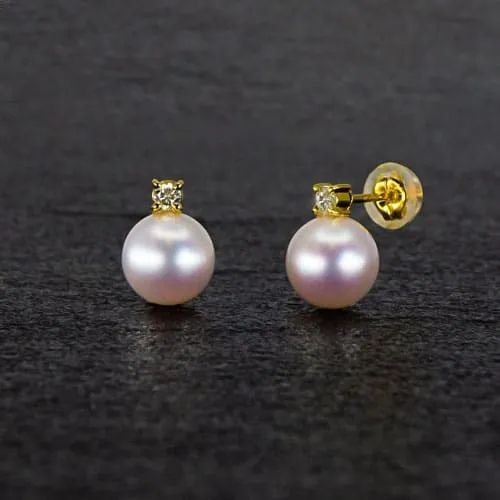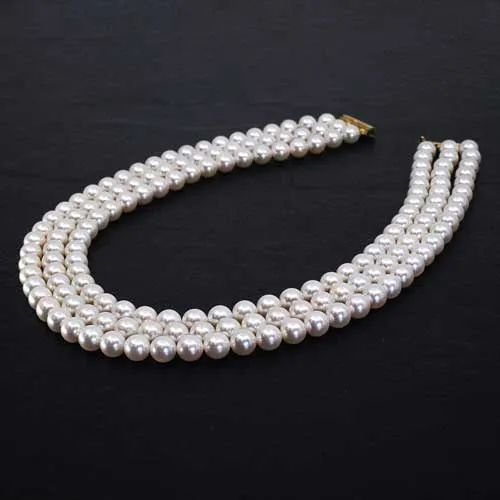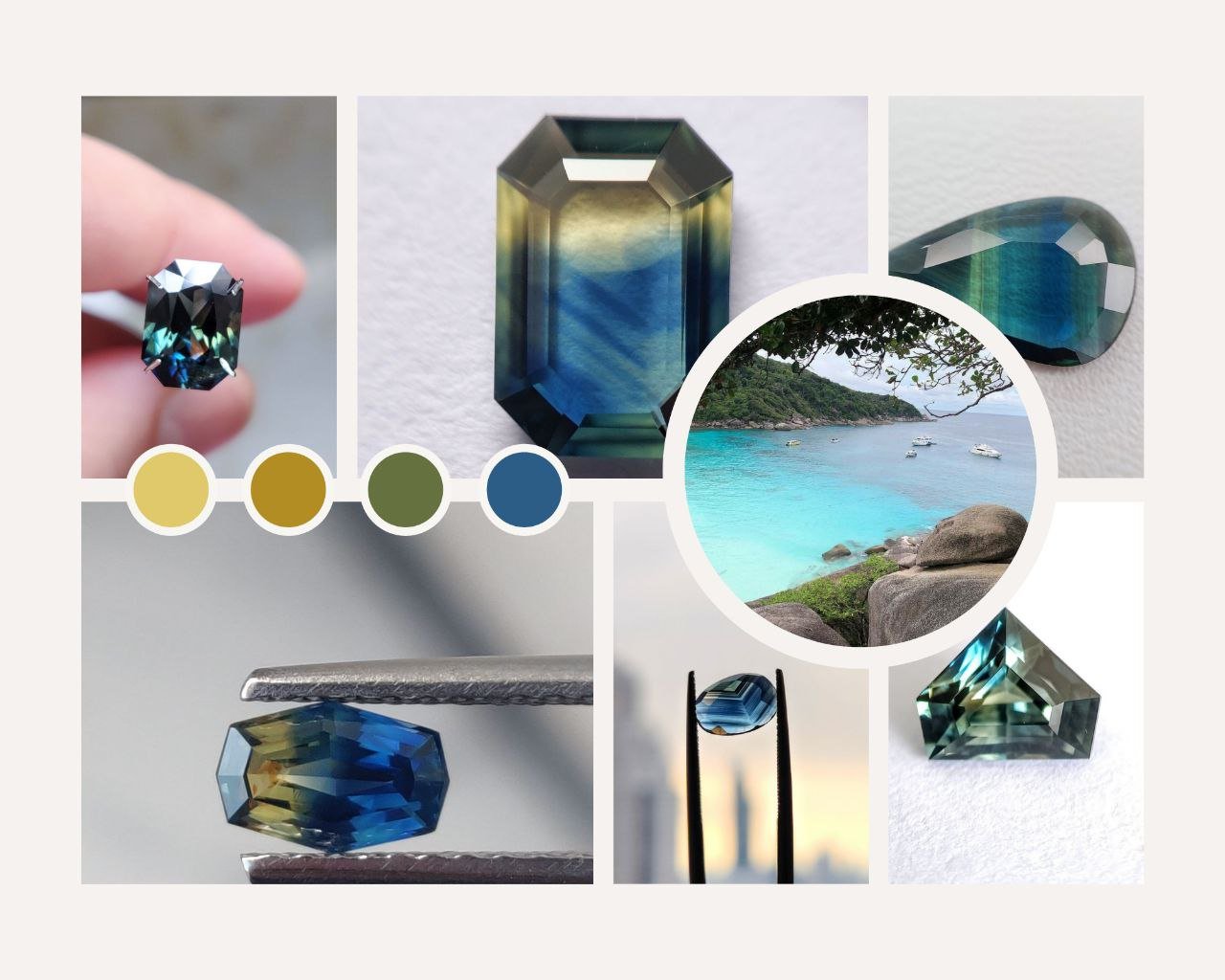Key Takeaways
-
Akoya pearls are renowned for their perfect round shape and high luster, making them a popular choice for luxury jewelry.
-
They come in a variety of colors, including white, blue, pink, and dyed black, each with unique overtones.
-
The quality of Akoya pearls is determined by factors like body color, overtone, luster, surface quality, and size consistency.
-
Understanding grading standards and performing visual inspections can help you select the best Akoya pearls.
-
Proper maintenance and storage are essential to preserve the beauty and longevity of Akoya pearl jewelry.
Best Akoya Pearl Types & Variations: Expert Tips & Tricks
Why Akoya Pearls Are Special
Akoya pearls are celebrated for their exceptional beauty and elegance. These pearls are primarily cultivated in Japan and China, known for their near-perfect round shapes and brilliant luster. Akoya pearls have a unique ability to reflect light, giving them a mirror-like finish that sets them apart from other types of pearls.
Besides their stunning appearance, Akoya pearls are also prized for their durability. They are formed in the Akoya oyster, which is relatively small compared to other pearl-producing mollusks. This results in pearls that are typically smaller in size but denser and more lustrous.

Popular Colors and Overtones
One of the most fascinating aspects of Akoya pearls is their variety of colors and overtones. The most common color is white, often accompanied by overtones of rose, silver, or cream. These overtones add depth and dimension to the pearls, making them more visually appealing.
Other natural colors include blue and pink, which are rarer and often more expensive. Dyed black Akoya pearls are also available, offering a dramatic and elegant alternative to traditional white pearls. For more insights on luxury items, check out this Louis Vuitton upcycling guide.
Types of Akoya Pearls
White Akoya Pearls
White Akoya pearls are the most classic and traditional type. They are highly sought after for their timeless elegance and versatility. These pearls typically feature overtones of rose, silver, or cream, which enhance their natural beauty. If you’re interested in comparing other gemstones, you might find this guide on Aquamarine vs Topaz helpful.
-
Rose Overtones: These add a subtle pinkish hue to the pearls, making them appear warm and romantic.
-
Silver Overtones: These give the pearls a cool, sophisticated look, perfect for modern and minimalist jewelry designs.
-
Cream Overtones: These create a soft, vintage feel, ideal for antique and heirloom pieces.
Blue Akoya Pearls
Blue Akoya pearls are a rare and exquisite variety. Their unique color ranges from pale silvery-blue to deep, rich blue, often with overtones of green or pink. These pearls are perfect for those who want something unique and eye-catching.
Pink Akoya Pearls
Pink Akoya pearls are known for their delicate and feminine appearance. They usually feature overtones of rose or peach, adding a touch of warmth and softness to the pearls.
“Pink Akoya pearls are not just beautiful; they are a symbol of love and elegance, making them a perfect gift for someone special.”
Dyed Black Akoya Pearls
Dyed black Akoya pearls offer a striking and modern alternative to traditional white pearls. These pearls undergo a color treatment process to achieve their deep, midnight-blue or greenish-black hue. Despite being dyed, they retain the high luster and round shape characteristic of Akoya pearls.
“Black pearls, with their mysterious and sophisticated allure, are perfect for making a bold fashion statement.”
Variations in Akoya Pearls
Akoya pearls can vary in several ways, including size, luster, and shape. Understanding these variations can help you choose the best pearls for your needs. For instance, knowing how to verify authenticity can be crucial when selecting high-quality pearls.
Size Differences
One of the primary factors that distinguish Akoya pearls is their size. These pearls generally range from 6mm to 9.5mm in diameter, with 7.5-8.0mm being the most popular size. Larger Akoya pearls, especially those over 8.5mm, are rarer and therefore more valuable.
When selecting Akoya pearls, consider the size that best suits your style and purpose. Smaller pearls, around 6-7mm, are perfect for delicate and subtle jewelry pieces, while larger pearls make a bold and luxurious statement.
Lustre Variations
Lustre is a critical factor in determining the quality and beauty of Akoya pearls. It refers to the pearls’ ability to reflect light, giving them a radiant and mirror-like finish. High-quality Akoya pearls exhibit a sharp, bright luster that can almost appear metallic.
Pearls with lower luster may look dull and lack the depth and brilliance that high-quality pearls possess. Therefore, when shopping for Akoya pearls, always look for those with the highest luster for the most stunning effect.
Shape Distinctions
Akoya pearls are renowned for their near-perfect round shape, which is highly prized in the jewelry world. While true round Akoya pearls are the most valuable, they also come in other shapes, such as oval, button, and baroque. Each shape has its unique charm and can be used to create different jewelry styles.
Round pearls are ideal for classic and elegant pieces, while baroque pearls, with their irregular shapes, offer a more contemporary and artistic look. When choosing Akoya pearls, consider the shape that best fits your personal style and the type of jewelry you want to create.
Choosing Quality Akoya Pearls
To select the best Akoya pearls, it’s essential to understand the factors that contribute to their quality. These include body color and overtones, luster, surface quality, size and shape consistency, and grading standards.
Body Color and Overtones
The body color of Akoya pearls is their primary color, which can range from white to blue, pink, and dyed black. Overtones are the secondary colors that shimmer over the body color, adding depth and dimension to the pearls. Common overtones for white Akoya pearls include rose, silver, and cream.
When choosing Akoya pearls, look for those with clear, vibrant body colors and complementary overtones. The combination of body color and overtones can significantly impact the pearls’ overall appearance and appeal.
Lustre and Surface Quality
Lustre is one of the most critical factors in determining the quality of Akoya pearls. High-quality pearls exhibit a sharp, bright luster that gives them a radiant and mirror-like finish. Pearls with lower luster may look dull and lack the depth and brilliance that high-quality pearls possess.
Surface quality refers to the presence of blemishes or imperfections on the pearls’ surface. While minor blemishes are common and acceptable, pearls with fewer and less noticeable blemishes are considered higher quality. When shopping for Akoya pearls, aim for those with the highest luster and the fewest surface imperfections. For more tips on identifying valuable gemstones, check out this guide on aquamarine vs topaz.
Size and Shape Consistency
Consistency in size and shape is another important factor in determining the quality of Akoya pearls. Pearls that are well-matched in size and shape create a harmonious and balanced look, especially in jewelry pieces like necklaces and bracelets.
When selecting Akoya pearls, look for those that are consistently round and uniform in size. This consistency ensures that the pearls will look cohesive and elegant when strung together in a piece of jewelry.
Grading Standards
Akoya pearls are graded based on several factors, including luster, surface quality, shape, and size. The most common grading system for Akoya pearls is the A-AAA scale, with AAA being the highest quality. AAA grade Akoya pearls have the highest luster, the fewest surface imperfections, and the most consistent shape and size.
Another prestigious grade is the Hanadama grade, which represents the highest quality Akoya pearls available. Hanadama pearls undergo rigorous testing and certification to ensure they meet the highest standards of luster, surface quality, and overall beauty.
When purchasing Akoya pearls, understanding these grading standards can help you make an informed decision and choose the best pearls for your needs.
Expert Tips for Selecting Akoya Pearls
Selecting the perfect Akoya pearls can be a rewarding experience if you know what to look for. Here are some expert tips to help you choose the best Akoya pearls for your jewelry collection.
Visual Inspection Tips
Performing a visual inspection is crucial when selecting Akoya pearls. Look for pearls with a sharp, bright luster and minimal surface blemishes. Examine the pearls under different lighting conditions to see how they reflect light and check for any imperfections.
Hold the pearls up to your face or against your skin to see how they complement your complexion. Pearls with the right overtones can enhance your natural beauty and create a stunning effect.
Understand Grading Terminology
Familiarize yourself with the grading terminology used for Akoya pearls. Terms like AAA, AA+, and Hanadama represent different quality levels, with AAA and Hanadama being the highest grades. Understanding these terms can help you identify the best pearls and make an informed purchase. For more information on how to verify the authenticity of luxury items, check out our Louis Vuitton upcycling guide.
Setting a Budget
Setting a budget is essential when shopping for Akoya pearls. High-quality pearls can be expensive, so it’s important to know how much you’re willing to spend. Consider the factors that are most important to you, such as luster, size, and surface quality, and allocate your budget accordingly.
Remember that investing in high-quality Akoya pearls can be a worthwhile investment, as they retain their beauty and value over time.
Setting a Budget
Setting a budget is essential when shopping for Akoya pearls. High-quality pearls can be expensive, so it’s important to know how much you’re willing to spend. Consider the factors that are most important to you, such as luster, size, and surface quality, and allocate your budget accordingly.
Remember that investing in high-quality Akoya pearls can be a worthwhile investment, as they retain their beauty and value over time. If you are looking for a great deal, consider purchasing from reputable sellers who offer promotions or discounts. For example, you can get 15% off by entering the code “Eleanor” at this website.
Spotting Fake Akoya Pearls
With the popularity of Akoya pearls, there are unfortunately many imitations on the market. To ensure you’re getting genuine Akoya pearls, here are some tips to help you spot the fakes:
Surface Texture: Real Akoya pearls have a smooth, almost glass-like surface. Fake pearls often feel gritty or rough.
Weight: Genuine Akoya pearls are heavier than their imitation counterparts. Hold the pearls in your hand to feel their weight.
Temperature: Real pearls feel cool to the touch when you first pick them up and warm up gradually. Fake pearls often feel warm immediately.
Drill Holes: Inspect the drill holes of the pearls. Real Akoya pearls have clean, sharp edges around the holes, while fake pearls may have jagged or uneven edges.
Maintaining Akoya Pearl Jewelry
Proper maintenance is crucial to preserving the beauty and longevity of your Akoya pearl jewelry. Here are some tips to help you care for your pearls:
First, always put on your pearls after applying makeup, perfume, and hairspray. These products contain chemicals that can damage the pearls’ surface. Also, avoid wearing your pearls while swimming or bathing, as chlorine and other chemicals in the water can harm them.
It’s also essential to clean your pearls regularly to keep them looking their best. Use a soft, damp cloth to gently wipe the pearls after each wear, removing any dirt or oils that may have accumulated. For a deeper clean, follow the proper cleaning techniques outlined below.
Proper Cleaning Techniques
Cleaning your Akoya pearls properly will help maintain their luster and beauty. For more detailed information, check out this Akoya pearls buyer’s guide. Here are some steps to follow:
Use a mild soap solution to clean your pearls. Mix a few drops of mild dish soap with lukewarm water.
Dip a soft cloth into the soap solution and gently wipe the pearls, being careful not to soak them.
Rinse the cloth with clean water and wipe the pearls again to remove any soap residue.
Allow the pearls to air dry on a soft towel. Avoid using heat or direct sunlight to speed up the drying process, as this can damage the pearls.
“Regular cleaning and proper care will ensure that your Akoya pearls remain beautiful and lustrous for years to come.”
Storage Recommendations
Proper storage is essential to prevent damage to your Akoya pearl jewelry. Store your pearls in a soft, fabric-lined jewelry box or pouch to protect them from scratches and other damage. Avoid storing pearls in plastic bags, as the plastic can emit chemicals that may harm the pearls.
Additionally, store your pearls separately from other jewelry to prevent them from being scratched by harder gemstones or metals. Pearls are relatively soft and can be easily damaged if not stored properly. For more information on pearl care, check out this Akoya Pearls Buyers Guide.
Avoiding Damage and Wear
To keep your Akoya pearls looking their best, it’s essential to avoid exposing them to harsh chemicals, extreme temperatures, and excessive moisture. Here are some tips to help you avoid damage and wear: identify value differences in gemstones to ensure proper care.
Remove your pearls before engaging in activities that may cause them to come into contact with chemicals or abrasive surfaces, such as cleaning, swimming, or exercising.
Store your pearls in a cool, dry place away from direct sunlight and heat sources.
Have your pearl jewelry restrung regularly by a professional jeweler to prevent the strands from breaking or stretching over time.
Frequently Asked Questions (FAQ)
What are Akoya pearls?
Akoya pearls are cultured pearls produced by the Akoya oyster, primarily found in Japan and China. They are known for their near-perfect round shape, high luster, and beautiful overtones, making them a popular choice for luxury jewelry.
These pearls are smaller in size compared to other types of pearls, typically ranging from 6mm to 9.5mm in diameter. Akoya pearls are highly valued for their elegance and timeless beauty. For more details on gemstone comparisons, check out this guide on Aquamarine vs Topaz.
How can I tell if an Akoya pearl is real?
To determine if an Akoya pearl is real, you can perform several tests, such as the surface texture test, weight test, temperature test, and drill hole inspection. Real Akoya pearls have a smooth surface, are heavier than fake pearls, feel cool to the touch, and have clean drill hole edges. For more detailed information, you can refer to this Akoya pearls buyer’s guide.
Additionally, purchasing from reputable sellers and looking for certification can help ensure you’re getting genuine Akoya pearls.
What is the typical price range for Akoya pearls?
The price of Akoya pearls can vary significantly based on factors such as size, luster, surface quality, and shape. On average, you can expect to pay anywhere from $100 to $10,000 or more for a strand of Akoya pearls.
Smaller pearls with lower luster and more surface blemishes will be on the lower end of the price range, while larger, high-quality pearls with excellent luster and minimal imperfections will be on the higher end. Investing in high-quality Akoya pearls is worthwhile, as they retain their beauty and value over time.




Pingback: Organic Pearl Dyeing Techniques, Enhance Natural Beauty & Color - Luxuria Luxe